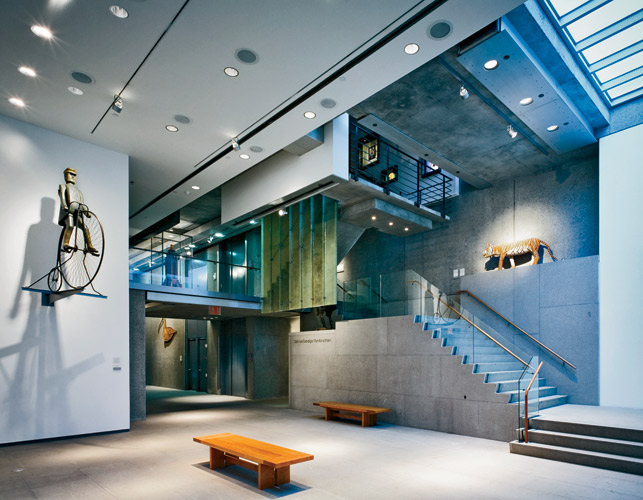I am not sure how many people remember the scene from the movie. The laconic Australian country bumpkin is held up by a scared kid wielding a stiletto on the streets of New York. He smiles at the kid, reaches calmly behind him and pulls out the biggest Bowie knife I've ever seen, and says "That's not a knife, this is."
Well, this might be the Crocodile Dundee green roof.
Namba Parks, a large retail and office complex outside Osaka, Japan, was built in
the footprint of the old Osaka baseball stadium. Completed in 2003 by the
Jerde Partnership, the mall has an eight level
rooftop garden
that spans several city blocks and includes groves of tree groves, artfully arranged rocks,
cliffs and canyons, lawns, streams, waterfalls, ponds and vegetable gardens the produce of which is sold from barrow stalls.
I have a general, though not particularly expert interest in reintroducing greenery into the city, including urban forestry and all forms of green roofs and green walls. And because I'm always looking for meaningful ways to change the balance between the urban heat island enhancing hectares of asphalt and concrete on the one hand, and greenery of different scales on the other, I tinge my general enthusiasm with a habit of looking at just how much green any such project really introduces into the concrete canyons. I hasten to add that this might seem like an annoying negativity, but it is definitely not meant to be.
So, for instance, I find it instructive to compare the art fully angled photograph headlining this post, with an aerial photograph of the development. It becomes immediately obvious, that even within the boundaries of the site the actual greenery represents a considerably lower proportion of the surfaces than it would first appear.
If we take it as a proportion of the urban fabric when we extend what might be called the 'system boundaries', the introduced greenery is seen to be even smaller. Superficially, this might be discouraging. The real lesson of a project like this is potentially much more complex. Looking at just the proportion of the area of the city represented by a new fragment of green roof top is a good measure of something – perhaps to do with the overall albedo. But it is a poor measure of just about everything else, including what is the experience of the urban fabric at ground level.
And this is where the excitement of this project lies for me. If it is able to give people the impression of an experience dominated by forest scale greenery, while leading them past the offerings of a seven storey shopping mall, it is a triumph of design.
The artful abstraction of the natural invites a suspension of disbelief, playing on our associations. This kind of evocative, but unashamedly artificial materiality was the hallmark of the work of the great landscape architect Laurence Halprin, probably at its most striking at Freeway Park, Seattle. But those modernist landscapes are now under threat, especially where water features incurred onerous expense to run and maintain.
At Namba Parks, the sheer abundance of the plant material distinguishes it from those more brutalist historic precedents, and aligns the project much more with contemporary eaxamples like the Highline in NY. And importantly, like WOHA's Regency Hotel in Singapore, here the artificial landscape is private property, hopefully so integral to the branding of the enterprize that money spent on its maintenance is more assured.
There should be more of it!!
